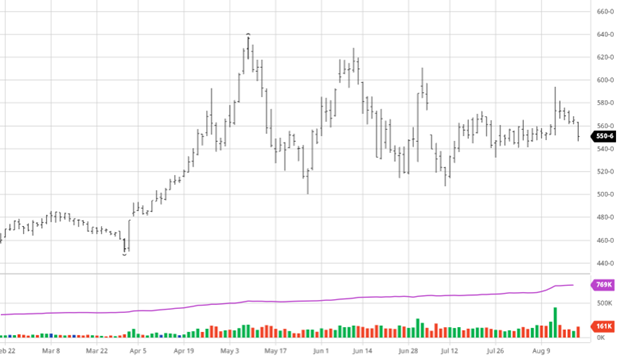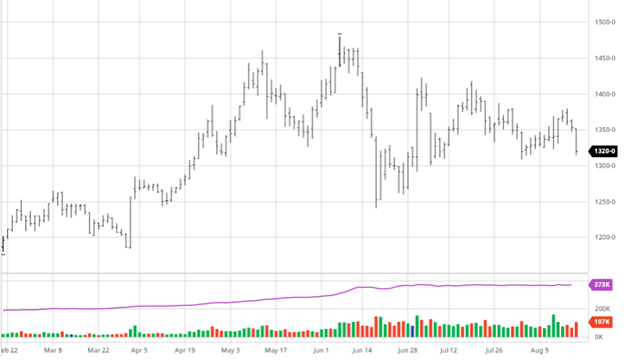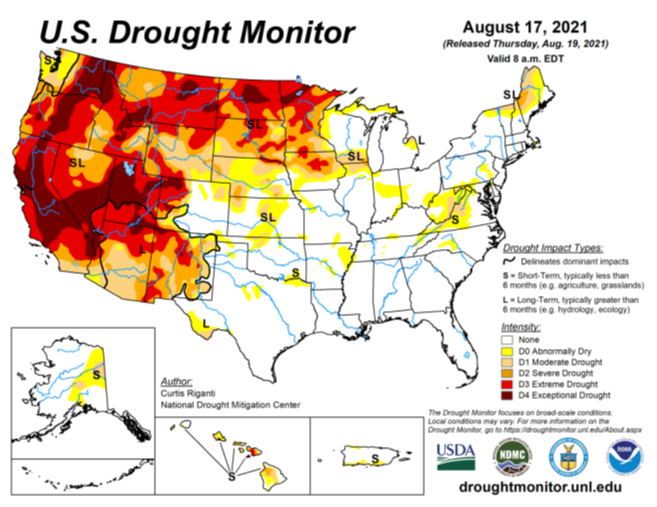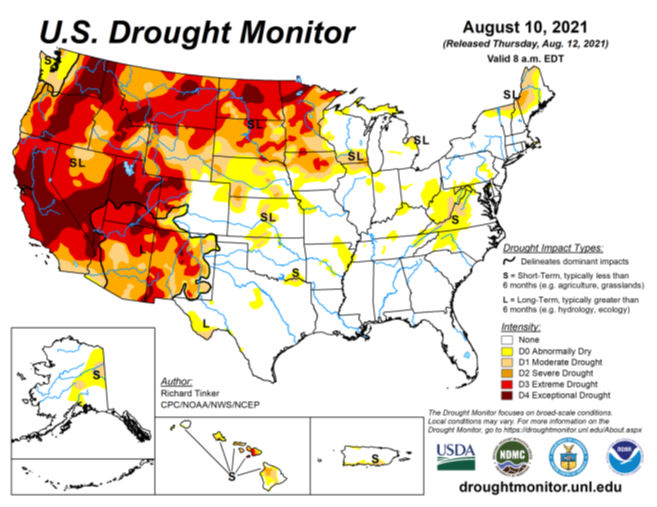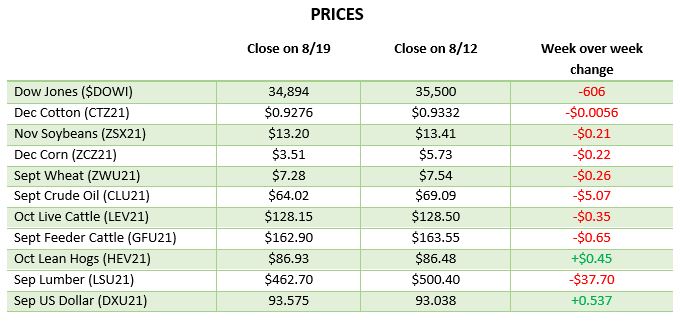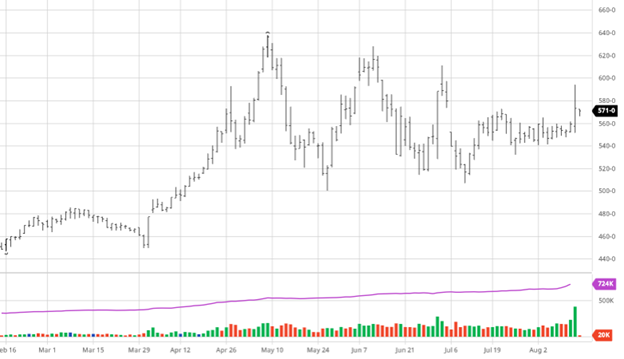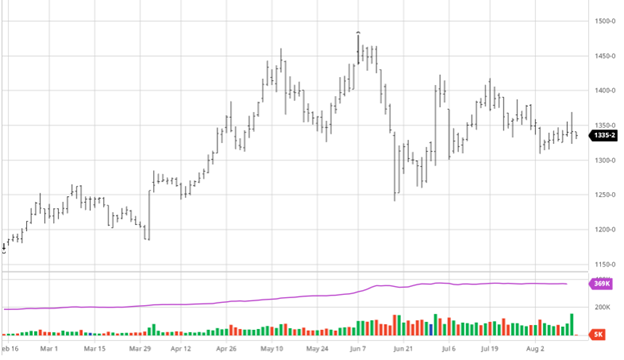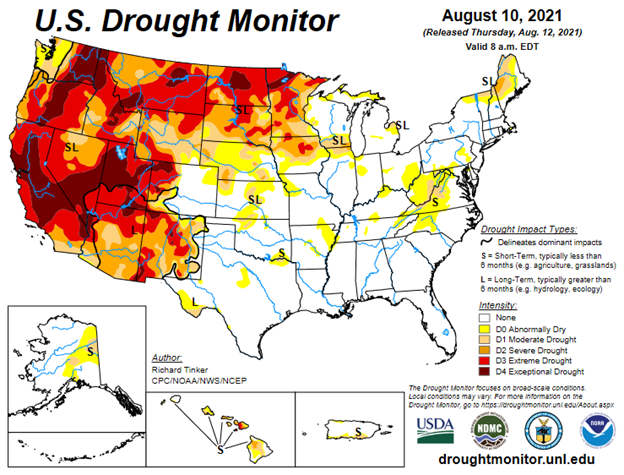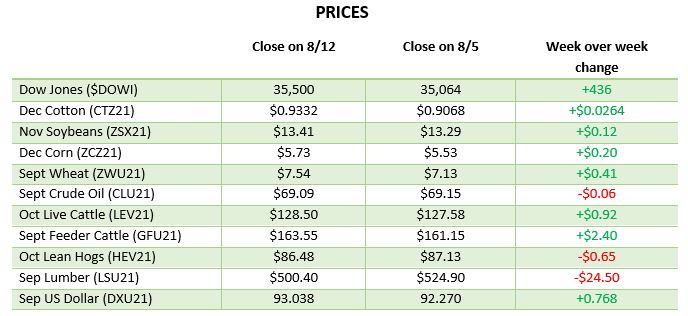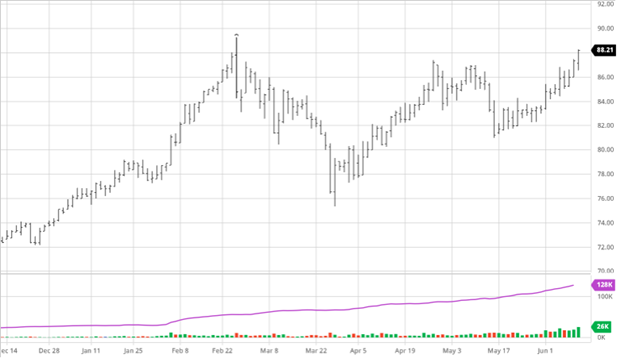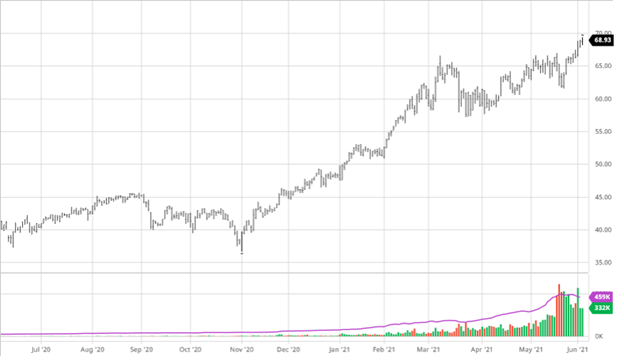
Corn was hit hard this week as we continue to experience the fallout from Ida hitting the export business along with a favorable weather forecast ahead. Exports were better than expected this week coming in at 43 million bushels, which was the highest export total for corn since mid-May. The fallout from Ida will, more than likely, be seen playing out in the cash market. That said, the longer supply chains are tied up, the bigger effect it will have on the uncertainty of the futures market. As we have mentioned before, South America’s crop is smaller than initially anticipated. With a smaller crop there will be some demand shift to the US corn crop; however, that is yet to show up in the export reports thus far. The big question is if/when that will change and show up in the US export reports. The September 10th USDA report next week will either fuel this bear run of the last month or calm the seas. An interesting note – The September USDA report the last 3 years has had the corn yield below the final yield which will be something to look for if they adjust yield.


Soybeans have had the same fate as corn the last few weeks as the bears have had the momentum. The issues in New Orleans are playing a major role in this week’s fall just like they did for corn. Brazil is getting some of that business despite a premium being paid just because traders know they can get beans on a ship and send it. The good weather in the weeks ahead could still help the soybean crop despite maybe being a little too late for most corn. As seasonal temperatures set in and no freeze expected any time soon the weather is bearish for prices while good for the crop.


Dow Jones
The Dow gained on the week as investors continue to feel out the market but not ditching it completely for other options. The rally from last Friday helped pull the market up on the week as the rest of the trading has been muted with no major moving days.
Ida
The port of New Orleans and the other infrastructure in the state of Louisiana and along the Mississippi River will take weeks to address and fix. This will/has caused major problems already for many residents in the areas effected along with the shipping.
Podcast
Check out our recent podcast where we’ve brought on one of our real-life firefighters from RCM Ag – Jody Lawrence along with Tim Andriesen from the CME Group to provide us with some inside baseball knowledge of the current state of the agriculture markets and to discuss the real-world application of the use of short-dated options to potentially fight the current blaze of volatility surrounding agriculture markets.
https://rcmagservices.com/the-hedged-edge/
US Drought Monitor
The maps below show there was a little change over the week with weekend rains in some areas that needed it and some drying in Indiana. 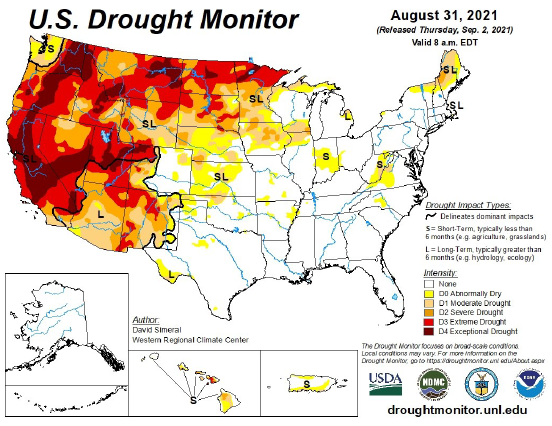
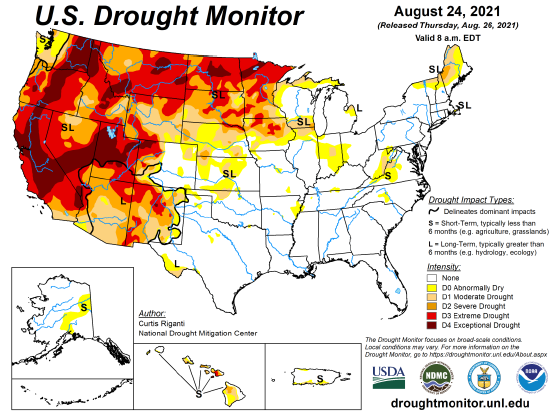
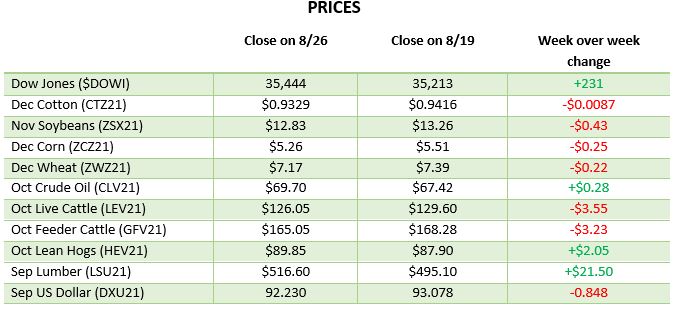
Via Barchart.com


